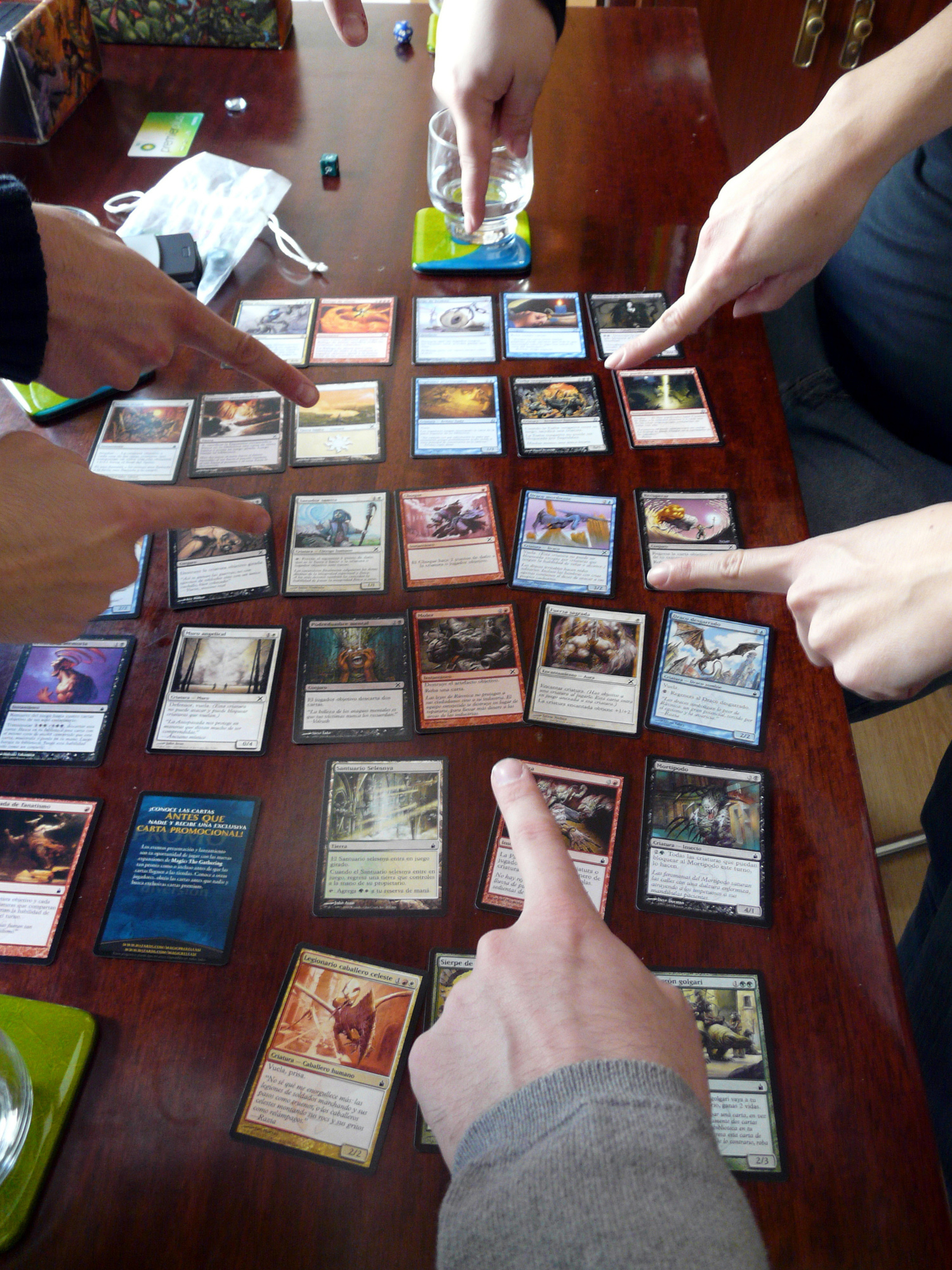A Brief History of Magic’s Rules

Looking at the rule systems that have governed Magic over the past 20 years, it is clear that the game in its current form(s) has developed in response to several significant factors: commercial pressures (to keep the game profitable), pressures to manage overall game and rules complexity (to keep the game interesting and nonconfusing to players), and rulings on unanticipated exploits of existing game rules. Accordingly, we have an opportunity to understand the game not only in one of its currently existing forms but as a protocological network in constant flux and reconstitution regarding (among other factors) game play/practice, game rules (defining specific play behaviors and mechanics), and diegetic narrative.
The clearest vector for game protocol changes may be reflected in the development of several discrete game types, each of which has its own set of governing rules and expected player behaviors. Standard play, mentioned briefly earlier, makes use of a small subset of the total cards, rotating new sets in and older sets out over time, as part of an effort to keep metagame-level play from stagnating (with new card mechanics and combinations continually replacing older ones). Modern as a play type expands the range of cards available for deckbuilding. There are also two main types of Standard and Modern play: constructed and draft. In constructed games, each player has their own pre-built deck, developed ahead of time from whatever legal cards they own. Draft games involve a secondary type of metagame, as players are restricted to building decks from a set of newly opened legal card packs that they have been allotted or that circulate among players before a short period of deckbuilding, with each player choosing a single card from a different pack each round of circulation. The surprise regarding which cards are immediately available—and the knowledge of which cards will be available to opponents in future drafting rounds—offers a different play and metagame experience than that of constructed play. If players might estimate over time which cards or decks another player is likely to use in a constructed game or tournament, they lack that certainty in the draft game format.
Legacy play takes the opposite route from constructed Standard or Modern games, allowing nearly every card released so as to facilitate new metagame ecologies that must account for existing protocological paradigms and newly created ones. Commander provides a multiplayer experience (that is, more than a one-on-one situation) in which players must contend with multiple opponents, along with increased deck sizes (100 rather than 60), some uniquely available cards, and the freedom to use any card not specifically banned. Commander, in many ways, bends the game closer to a fantasy battle than Standard.
Over the course of Magic’s two-decade span, there have been only a handful of significant changes to the rules from their original iteration, and these changes, unsurprisingly, have made substantial impact on the protocols that have facilitated subsequent gameplay. There are two of special note: the removal of an early rule called "mana burn" and the incorporation of a new card type, "planeswalker," into the game.
Mana burn was initially considered an integral component of Magic play; according to the Magic: The Gathering Comprehensive Rules (2017), "Older versions of the rules stated that unspent mana caused a player to lose life; this was called 'mana burn.' That rule no longer exists" (p. 207). The rule, whether purposefully or otherwise, seemed to risk slowing down gameplay, as players might attempt to avoid situations where they would have too much mana to spend in a given turn. Interestingly, the game’s designers also discovered that the rule’s presence or absence had little effect on game play and, thus, there was no apparent need to keep it (Rosewater, 2009). Given the growing complexity and continued sense of change desired to promote development of the game, mana burn was ultimately phased out, with some initial (albeit not longstanding) backlash from players (Rosewater, 2009).
The planeswalker as a card type (rather than as a descriptor for each game player) added new mechanics to the game, providing players with an opportunity for unique abilities to activate each round that did not cost mana and for a second target (the planeswalker card itself) for opponent spells. Essentially, planeswalker cards represent powerful beings diegetically close to the level of the player: dimension-crossing heroes or villains, important figures in the Magic storyline such as the evil dragon overlord Nicol Bolas, Planeswalker or the noble hieromancer Gideon Jura. Rather than a summoned creature, the planeswalker is a summoned ally with their own abilities and the interesting mechanic of counters. Each planeswalker has three to five abilities that can be used once per turn, at any time, and include either adding or subtracting a number of loyalty counters to those already on the card, a number which also acts as the planeswalker’s life total.